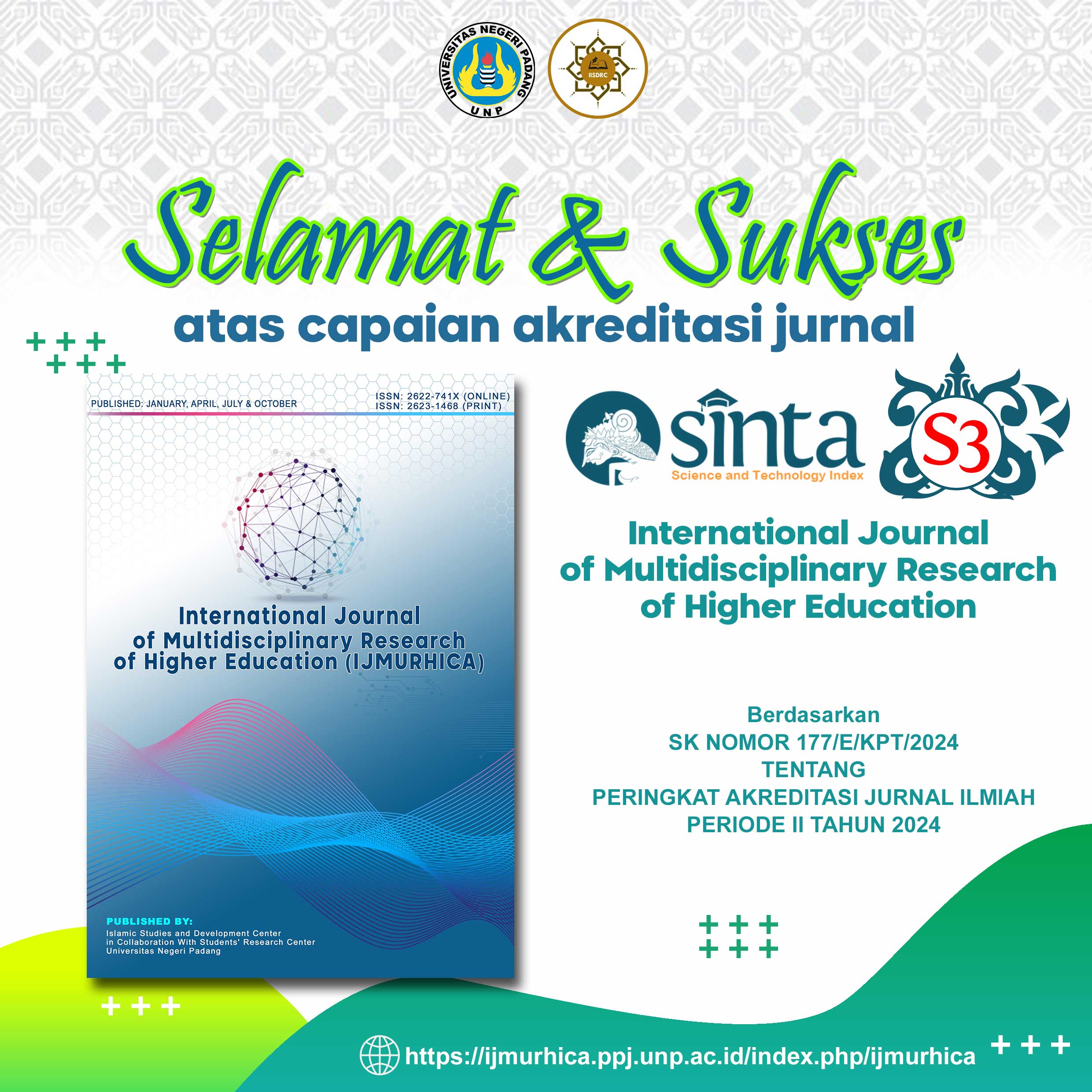A Content Analysis: Values of Islamic Marriage in the Movie of Ayat-Ayat Cinta
DOI:
https://doi.org/10.24036/ijmurhica.v6i3.142Keywords:
A Content Analysis, Islamic Marriage, Ayat-Ayat CintaAbstract
Fiqh Munakahat is a branch of jurisprudence that explains the legal rules regarding marriage starting from the marriage contract to household rules. The film Ayat-Ayat Cinta continues the film Verses of Love in the first series. This study aims to analyze the content of fiqh Munakahat material. In the film Ayat-Ayat Cinta. This article was written using a qualitative method with a content analysis approach. The data source is taken from the video film Ayat-Ayat Cinta with a duration of 2:06:54 (two hours, six minutes, fifty-four seconds) through document analysis used by researchers as a data collection technique, all documents are supporting data that can be used as supporting data for research related to the issues and problems being studied. All document analysis results are then analyzed by describing the data obtained from the word in dialogue and image forms in movie scenes using the Analysis Interactive Milles & Hubberman as a method and tool for analyzing qualitative research data. Overall, the results of the analysis show that there are five contents of fiqh munakahat material in the film Ayat-Ayat Cinta, namely khitbah, marriage contract, rights and obligations of husband and wife, and polygamy. The results of this study can be used as lesson material for young married couples to live the life of a household ark.






